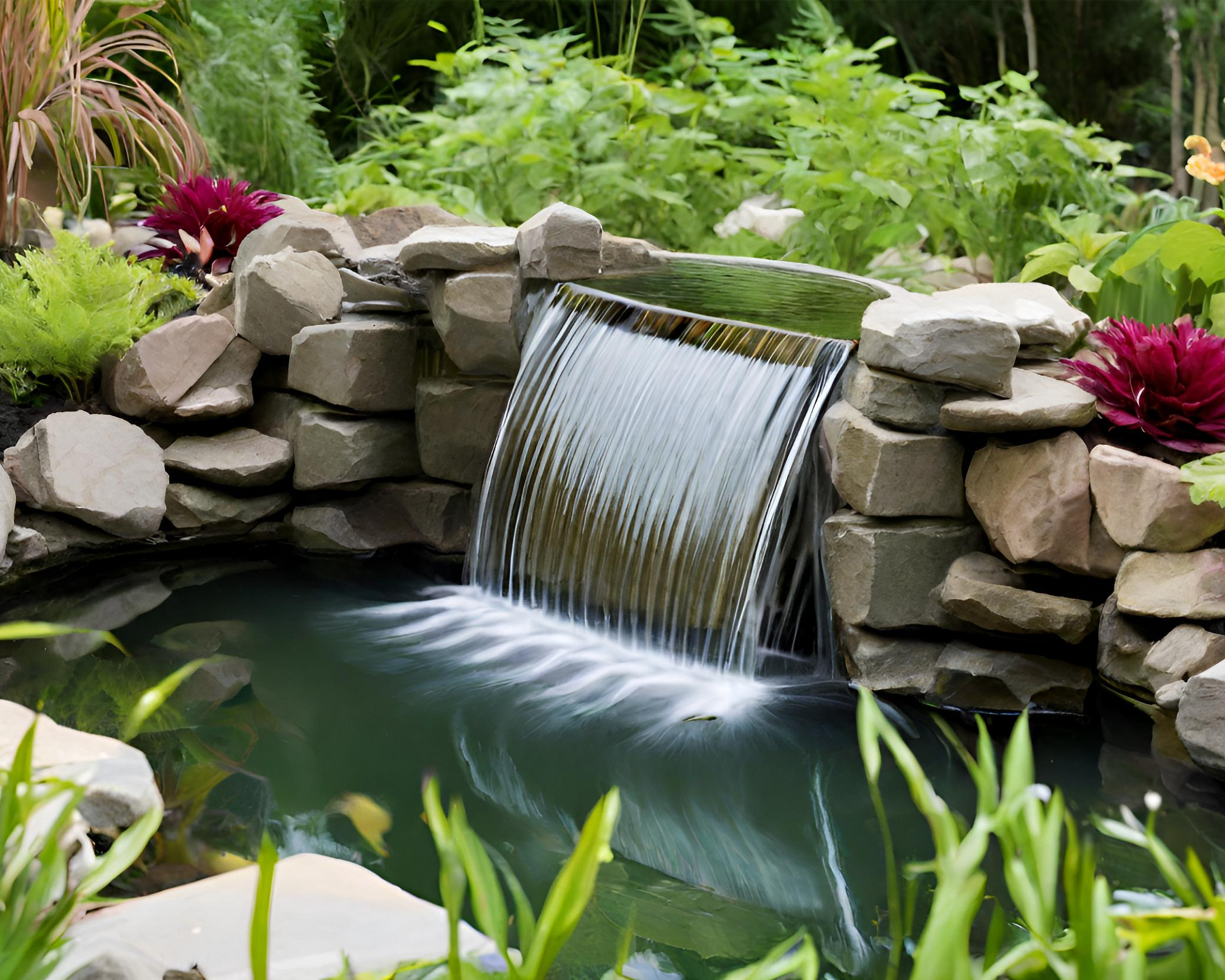
Choosing the Perfect Waterfall Pump for Your Pond: A Comprehensive Guide
Selecting the appropriate waterfall pump for your pond can be a perplexing task. There are numerous factors to consider, but fear not! This guide will simplify the process by outlining four essential steps.
This initial step is relatively straightforward. If your waterfall is already constructed, simply measure the distance between opposing edges of the waterfall opening to determine the total width in inches. If you're in the planning stages, consider using a spillway to simplify waterfall construction. Once you have the width of your waterfall in inches, jot down this number for later.
Step 2: Desired Waterfall Flow
Consider the visual impact you desire for your waterfall. Additionally, remember that this will be a significant contributor to the lovely sound of cascading water. What kind of water flow best suits your preferences? Here are the three primary categories to consider:
- Trickle Flow: A trickle flow features intermittent breaks in the water cascading over the waterfall's edge.
- Sheet Flow: A sheet flow delivers a smooth and continuous stream of water.
- Niagara Flow: A Niagara flow is a heavy volume of water, producing the most robust sound of moving water.
If you prefer a "trickle" flow, multiply the width you obtained in step 1 by 50. If you desire a "sheet" flow, multiply by 100. Opting for a "Niagara" flow necessitates multiplying by 200. This calculation will provide the gallons per hour (GPH) capacity your pump will require.
Example:
Let's assume you envision a "sheet" flow for your waterfall. Following step 1, you measured a width of 16 inches. We need to multiply this width by 100 to determine the GPH requirement.
Measure the height of your waterfall in feet, starting from the water's surface in your pond to the waterfall's break. You might have a waterfall situated further away from the pond, cascading down a water course. In this instance, only the vertical distance needs to be measured. If your waterfall isn't built yet, estimate this measurement. A typical height range for most backyard waterfalls is between 1 and 3 feet. Remember the distance between the waterfall and the pump for the next step.
Example:
The waterfall in our example has a height of 3 feet.
Step 4: Distance to the Waterfall
In this step, measure the length of tubing in feet. Begin from where the tubing exits the pond and extends to the topmost point of the waterfall where it terminates. We are only considering water-resistant tubing here, and water resistance isn't a factor until it reaches the tubing above the water level. For every foot of tubing leading to the waterfall (from step 3), multiply by 10.
Example:
The distance of tubing used is 3 feet. Consequently, we multiply that by 10.
3 ft x 10 = 30 = 2 ft. 6 in.
Finally, add this value to the measurement obtained in step 3.
3 ft. + 2 ft. 6 in. = 5 ft. 6 in.
Now that you have gathered all the necessary information, use it to determine the ideal pump size. For instance, the waterfall in our example necessitates a pump capable of pumping 1,600 GPH at a height of 5 feet and 6 inches. Consult the flow charts provided in the product packaging or instruction manual to identify the most suitable waterfall pump for your requirements.
By following these straightforward steps and considering the crucial factors mentioned above, you can confidently select the perfect waterfall pump to bring your dream pond to life! Remember, the ideal pump will ensure that your waterfall operates flawlessly and delivers the visual and auditory impact you desire.





Leave a comment